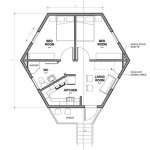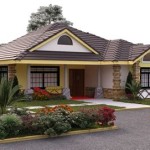Lake Pump House Plans: Essential Considerations for a Perfect Water Source
For those fortunate enough to own property adjacent to a lake, the prospect of constructing a pump house can be an exciting and practical endeavor. A well-designed lake pump house not only provides an efficient supply of water for various uses but also adds aesthetic appeal to your lakeside property.
To ensure that your lake pump house project is a success, it is crucial to carefully consider several essential aspects before getting started.
1. Legal Considerations and Permits
Before embarking on construction, it is essential to check local building codes, zoning regulations, and environmental protection rules. Some areas may have restrictions on the placement and size of pump houses. Obtaining the necessary permits and adhering to all regulations will prevent legal complications and ensure a smooth building process.
2. Location and Access
The location of your pump house should be carefully chosen to optimize water quality, access, and aesthetics. Look for a spot that provides direct access to the lake, preferably where the water is clear and deep. Consider the distance to the areas where you will be using the water, as well as the ease of access for maintenance and potential repairs.
3. Size and Capacity
The size of your pump house will depend on the water requirements of your property. Consider the number of taps, toilets, and irrigation systems you plan to connect to the pump. A pump house should be large enough to comfortably accommodate the necessary equipment, including the pump, pressure tank, and any filters or treatment systems.
4. Pump Selection
Selecting the right pump for your lake pump house is essential for efficient water flow. The pump should be sized appropriately to meet your flow rate and pressure requirements. Consider factors such as the depth of the lake, the distance to the pump house, and the number of fixtures that will be connected.
5. Filtration and Treatment
Depending on the quality of your lake water, you may need to consider filtration and treatment systems to ensure clean, safe water. This may involve installing filters to remove sediment, disinfection systems to eliminate bacteria, or water softeners to reduce hardness.
6. Electrical Requirements
The electrical system for your lake pump house must be properly designed and installed by a qualified electrician. This includes selecting the correct wiring, circuit breakers, and grounding system to ensure safe and reliable operation of the pump and other equipment.
7. Ventilation and Insulation
Proper ventilation is essential to prevent moisture accumulation and potential damage to the pump and other equipment. Install vents or a fan to ensure adequate air circulation. For areas with extreme weather conditions, insulation may be necessary to prevent freezing or overheating of the equipment.
Conclusion
By carefully considering these essential aspects, you can ensure that your lake pump house plans will result in a functional and aesthetic addition to your property. A well-designed and well-built pump house will provide a reliable source of clean water for years to come, while also enhancing the beauty of your lakeside setting.

Chapter 16 Design Of Pumping Stations

Chapter 16 Design Of Pumping Stations

Chapter 16 Design Of Pumping Stations

Pin By Mauricio Guerra On Modelismo Tower Design House Pump

Pump House For Well Pumphouse Outdoors Woodwork Water

Chapter 16 Design Of Pumping Stations

Cool Water Well House Plans Pertaining To Cozy Check More At Http Rockwellpowers Com Pump

Chapter 16 Design Of Pumping Stations

Group Hoping To Save The Staley Pump House Plans Take Its Case Up Ladder And Even Across Ocean

Water Well House Outdoor Remodel Pump








